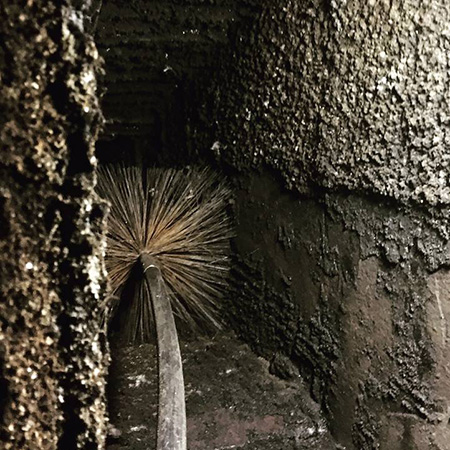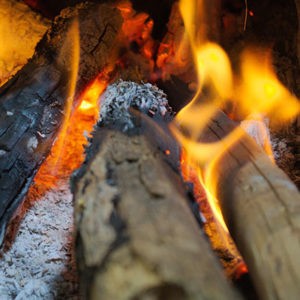A wood-burning fireplace is a primary and supplemental source of home heating for millions of homeowners across the country. Its comforting warmth makes a home feel cozy inside when it is blistery cold outside. But as beautiful as the flames are to see, there is a hidden danger among those flames that you may not readily notice. It is called creosote, and it’s not something that you want to ignore.
What is Creosote
Creosote is a contaminant that is naturally produced during the chemical reaction of combustion when burning a fire. It is an oily, tarry substance that is highly flammable. A spark from an ember is all it takes to set the chimney alight. Creosote will continue to accumulate with every fire unless it is removed. Creosote is most prevalent in wood-burning flames but is also produced in liquid fuel combustion like gas. So, homeowners need to monitor creosote accumulation whether they have a wood-burning or gas fireplace.
Every year fire departments across the country respond to thousands of chimney fires resulting in millions of dollars in property damage. Fires that start in the chimney can rapidly spread engulfing the entire home that can cause severe injuries and even death. According to fire experts, most chimney fires are a result of excessive creosote in the chimney.
The Chimney Safety Institute of America (CSIA) and fire safety experts recommend homeowners to inspect and clean their chimney at least once per year. An accumulation of 1/8” or more of creosote is considered excessive and should be removed to reduce the risk of fire. There are also several things homeowners can do to minimize creosote accumulation in their chimney:
Burn Only Seasoned Firewood
Wood that has been seasoned or dried for 6 to 12 months has a much lower moisture content. The fire will burn hotter for a more extended amount of time with less smoke and creosote.
On the other hand, freshly cut (green) wood has a very high moisture content. The wood will burn faster at a lower temperature creating plenty of smoke and creosote residue. Remember, if there is smoke, there is creosote.
Don’t Starve the Fire
A fire needs oxygen to breathe and continue to burn. Without oxygen, there is no fire. Always ensure your damper is open all the way when starting the fire. You can regulate the fire by adjusting the damper but be careful to avoid cutting off too much oxygen. Fires at lower temperatures produce more creosote.
Avoid Smoldering
Many homeowners allow their fire to smolder until it burns itself out. As the fire begins to burn out more creosote is produced at the lower temperatures. Rather than allowing the fire to smolder, it should be extinguished. To extinguish a fire in the fireplace spread the wood and ambers, scoop up the cooler ash to cover them, then cover it with baking soda. Wait until the fire is completely out before closing the damper to avoid carbon monoxide from backing up into your home. Also, never leave a burning fireplace unattended.




